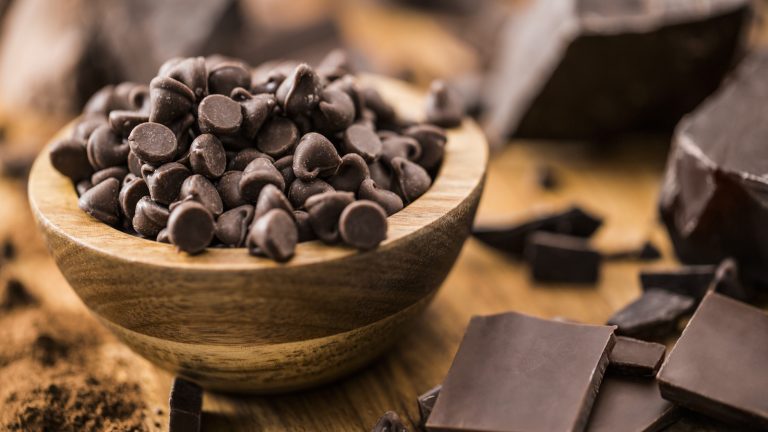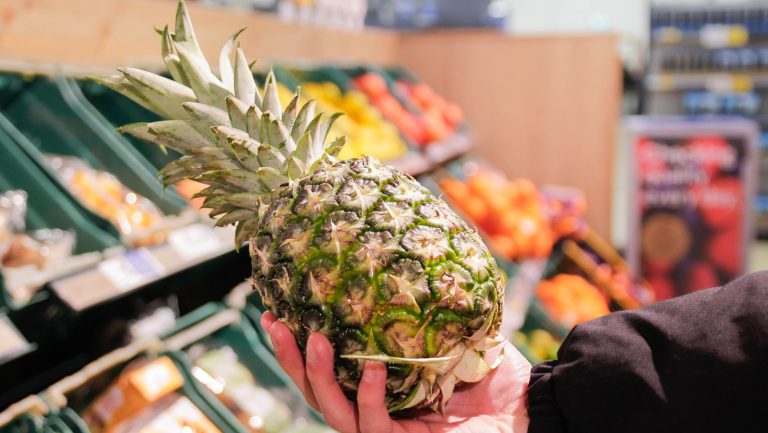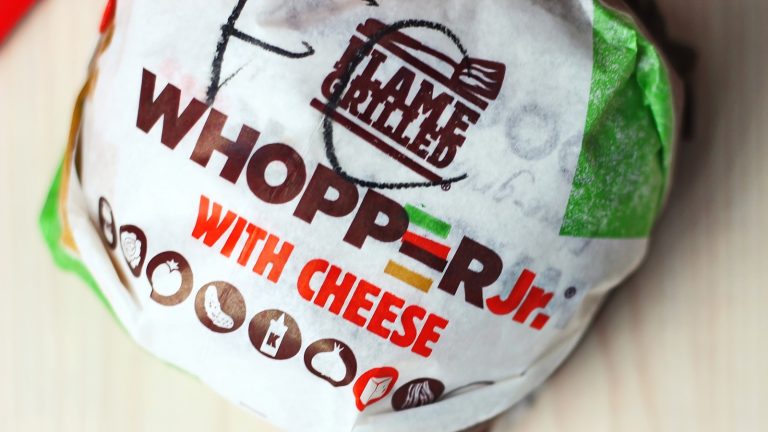Pairing wine with fish sounds simple enough — just reach for a white, right? Not exactly. When it comes to flaky fish, the answer isn’t so cut and dry (or crisp and citrusy). Texture, preparation, seasoning, and sauce all influence which wine will actually shine. To help demystify this delicate dance, we enlisted two experts who know their way around a bottle.
Ashleigh McFadden, sommelier at fine-dining restaurant Nàdair and Atlanta’s 2024 Michelin Sommelier of the Year, sees wine as “a nexus that creates bonds with people from different cultures and backgrounds.” For her, pairing is playful, not prescriptive. “Wine is a complement, not an afterthought,” she says.
We also tapped Brittany McCarthy, national beverage manager at Paradies Lagardère (a leader in airport hospitality), who’s spent over a decade shaping wine programs. “What I love most about wine is its ability to tell a story — of place, of people, and of time,” she says. Her approach? “Balance and curiosity.” The old white-with-fish rule is a helpful starting point, but “the key is knowing the structure of the wine and the character of the dish.”
With their guidance, we’re uncorking the best bottles to serve alongside everything from simply grilled snapper to buttery poached cod and boldly seasoned sea bass. Whether you’re a wine novice or someone with opinions about decanting, there’s something here to level up your next seafood night. Because when it comes to wine and flaky fish, sometimes the best pairings swim against the current.
1. Traditional method sparkling wines
When it comes to flaky fish, one of the best bottles you can pop isn’t still, it’s sparkling. “Traditional method sparklings are the ultimate wine pairing,” says Ashleigh McFadden. “With high acidity and varying textures, it’s the perfect wine for food. Both blancs and rosés are good options.” Why do they work so well? It’s all about balance. The bright acidity cuts through the richness of buttery poached cod or pan-fried trout while the bubbles add lift, keeping your palate refreshed. Brittany McCarthy agrees: “The bubbles and high acidity cut through any buttery or fried preparation, offering lift and contrast.”
Traditional method sparkling wines, like Champagne, Franciacorta, and Cava, are made with a time-honored (and labor-intensive) process that involves a double dose of fermentation. After the base wine is made, winemakers add a mixture of sugar and yeast (called liqueur de tirage), and bottle the wine. This kicks off a second fermentation inside the bottle that creates those signature fine bubbles and adds complexity, texture, and layers of toasty, nutty, or brioche-like notes — perfect for pairing with delicate fish. Even better? Those bubbles work wonders in wine-based cocktails that can elevate a seafood feast even further.
So, next time you’re serving flaky fish, whether it’s a delicate sole meunière or hearty fish and chips, consider reaching for something bubbly. Not only does it pair beautifully, but it also makes any meal feel like a celebration.
2. Sauvignon Blanc
Sauvignon Blanc and flaky fish? A total catch. This zesty white wine is kind of like the citrusy squeeze your seafood has been missing. Originally from the Loire Valley of France (think Sancerre and Pouilly-Fumé), Sauvignon Blanc is now grown all over the world — from New Zealand to California to Chile — and each region brings something a little different to the table (or plate, in this case).
What they all have in common: bright acidity, herbaceous notes, and citrus-forward flavors. Think lemon zest, lime, grapefruit, fresh-cut grass, and sometimes even a little flinty minerality or tropical fruit, depending on where it’s grown and how it’s made.
That high acidity is key — it acts like a palate refresher, cutting through the delicate oils of fish without overpowering it. A Loire Valley Sancerre, with its stony minerality, is a dream with poached halibut or sole in a traditional French beurre blanc sauce. Meanwhile, a bold, fruit-forward New Zealand Sauv Blanc can handle grilled mahi mahi with mango salsa or herb-crusted sea bass.
If your fish dish leans green, like with a chimichurri, basil pesto, or even just a handful of fresh herbs, Sauvignon Blanc is the natural wingman. Its grassy notes echo the greenery on the plate, and its acidity keeps things snappy. It’s a classic for a reason.
3. Albariño
If there’s a single white wine that practically begs to pair with flaky fish, it’s Albariño. Native to Galicia in northwestern Spain (specifically the Rías Baixas region), Albariño thrives in vineyards just miles from the Atlantic, where vines are kissed by salty sea breezes. That proximity to the ocean gives the wine a subtle, briny edge that makes it a natural partner for seafood.
“This is the perfect example of what grows together goes together,” says Ashleigh McFadden. “The ocean spray these vines receive gives them the perfect salinity to pair with white fish.”
Albariño is typically made in stainless steel tanks to preserve its freshness and zing. Expect bright acidity, a lean, light body, and lively notes of citrus, green apple, and stone fruit, sometimes with a touch of minerality or a floral lift. It’s crisp, clean, and built to refresh your palate with every sip.
“Bright acidity and a slight salinity make this a perfect match for flaky fish,” adds Brittany McCarthy, “especially when served simply or with citrus-based sauces.” In other words, Albariño doesn’t overpower delicate fish — it enhances it. Whether you’re serving grilled snapper, poached halibut, or a citrusy ceviche, Albariño brings just the right pop of acidity and oceanic flair to the table.
4. White pinot noir
Wait, white pinot noir exists? We did a double-take, too. Best known as a red grape behind some of the world’s most elegant reds, pinot noir has a surprise up its sleeve: when vinified without grape skin contact, it transforms into a rare white wine that’s as refreshing as it is unexpected.
Here’s how it works: red grape skins contain that signature pigment, not the juice itself. So, if you press pinot noir grapes gently and ferment the juice without the skins (which also hold most of the tannins), you get a white wine with a golden hue and a totally different personality from its red counterpart. Flavor-wise, white pinot noir is light, bright, and often floral, with notes of pear, citrus, melon, and a touch of spice or cream depending on how it’s aged. Ashleigh McFadden says, “Light and bright with floral notes, this wine complements white fish easily. The preparation of the fish should determine whether oaked or unoaked is the best option.”
So, what’s the difference? Oaked white pinot noir spends time aging in barrels, giving it a fuller body, soft vanilla notes, and a creamy mouthfeel, making it ideal for richer preparations like fish with beurre blanc. Unoaked versions, on the other hand, stay crisp and citrusy, better suited for grilled or simply seasoned flaky fish. Consider this a delightful pairing curveball for your next seafood dinner.
5. Red pinot noir
Whoever said you can’t pair red wine with fish clearly hasn’t met a good pinot noir. The old “white with fish, red with meat” rule might be a useful starting point, but it’s far from gospel, and when it comes to flaky fish, red wine can absolutely hold its own. The key is in the texture and weight. Flaky fish like trout, snapper, and even salmon (yes, it counts here, too) can pair beautifully with lighter-bodied reds that are low in tannins and high in acidity. That’s where pinot noir comes in. It’s elegant and subtle, with red berry notes, a soft mouthfeel, and just enough structure to complement, but not overpower, more flavorful or richly prepared seafood.
Brittany McCarthy puts it perfectly: “When the fish is grilled or accompanied by earthy or umami elements (like mushrooms or lentils), a light-bodied pinot with bright acidity can be a beautiful, unexpected pairing.” Not only does pinot noir taste great with flaky fish, but it’s a budget-friendly option that will save you money on wine without sacrificing the overall experience.
The gentle tannins and juicy acidity of pinot help lift dishes with more robust seasonings or smokier flavors. Think miso-glazed cod, trout with lentils, or mushroom-stuffed flounder. It’s all about balance and contrast, not strict rules. So, go ahead and serve red wine with fish. Just make it the right red, and your palate will thank you.
6. Riesling
Riesling might just be one of the most underappreciated heroes in the world of fish-friendly wines. Hailing primarily from Germany’s Rhine River valley, especially the Mosel, Rheingau, and Pfalz regions, Riesling is a chameleon of a white wine, known for its zippy acidity, aromatic complexity, and a sweetness scale that stretches from bone-dry to dessert-level luscious. That flexibility makes it an ideal companion for a wide range of flaky fish dishes.
So, what makes it so special? For starters, Riesling tends to be lower in alcohol, which means it won’t overpower delicate seafood flavors. And thanks to its bright, citrusy acidity, it acts like a built-in squeeze of lemon, lifting flavors, balancing richness, and refreshing the palate bite after bite. As Ashleigh McFadden puts it, “Versatile due to low alcohol and high acidity, this light white will not overpower even the lightest preparation.”
She recommends two classic German styles: Kabinett and Auslese. Kabinett wines are light-bodied and just barely off-dry, with green apple, lime, and floral notes, perfect for pairing with simply grilled trout or steamed halibut. Auslese is more intense, with lush stone fruit, honeyed richness, and a rounder texture, making it a stellar match for spicy dishes like Thai sea bass or black cod with miso glaze.
7. Chardonnay
If there’s a shapeshifter in the wide world of wine, it’s Chardonnay. Grown everywhere from Burgundy and California to South Africa and beyond, this white grape is known for its versatility, and that’s exactly what makes it a great match for flaky fish. Whether you’re poaching cod or pan-searing sea bass, there’s a Chardonnay that fits the bill.
“The chameleon of white wine, Chardonnay can pair with every preparation depending on how it is developed,” says Ashleigh McFadden. For lighter dishes, she recommends styles fermented or aged in stainless steel or neutral oak, which preserve the wine’s bright acidity, citrus-apple notes, and crisp texture. Stainless steel–fermented Chardonnays tend to be zippy and clean, while those aged in neutral oak gain a touch of roundness and softness — a perfect match for fish with subtle herbs or light citrus sauces.
Brittany McCarthy points to Chablis, a French Chardonnay known for its steely, unoaked style, as a standout pairing for flaky fish: “Lean and mineral-driven, Chablis enhances the delicate texture of the fish without overpowering it.”
If your fish is on the richer side, say, served with a buttery sauce or roasted with root vegetables, you can reach for a more full-bodied, oaked Chardonnay. The key is letting the wine support the dish, not smother it. No matter the style, there’s a Chardonnay that’ll cozy up perfectly with your flaky fish. And if you can’t finish the bottle in one sitting, don’t worry. Just save that leftover wine to use for a marinade.
8. Vermentino
Vermentino might not be the first wine you think of when planning a seafood dinner, but it absolutely deserves some careful consideration. Native to the sunny, sea-swept coasts of Italy (especially Sardinia and Liguria), Corsica, and southern France, Vermentino is a white grape that thrives near the ocean, and it tastes like it, too.
“A coastal varietal with citrus, herbal, and savory notes, Vermentino adds a Mediterranean flair to any fish dish,” says Brittany McCarthy. That breezy seaside vibe isn’t just marketing. Thanks to its natural salinity, zesty acidity, and complex aromatics, Vermentino is tailor-made to play well with flaky white fish. Think grilled branzino with lemon, snapper with olives and tomatoes, or cod simply poached with fresh herbs. This wine won’t overpower delicate flavors, but rather, it’ll elevate them.
Vermentino is typically fermented in stainless steel, which helps preserve its bright citrus, green apple, and subtle almond notes, along with its signature freshness. Some bottles even hint at a touch of sea breeze or crushed rocks, which might sound bizarre, but is actually perfect for echoing the minerality of seafood. Its slight bitterness on the finish also gives it just enough edge to cut through oil or richer sauces.
9. Grüner Veltliner
If Grüner Veltliner isn’t already on your radar, consider this your friendly nudge to grab a bottle, especially if flaky fish is on the menu. Native to Austria, Grüner (as the cool kids call it) is the country’s signature white grape and an under-the-radar gem in the wine-pairing world.
Light to medium-bodied with zippy acidity and a signature snap, Grüner Veltliner brings a bright burst to every sip. “Its signature white pepper and green apple notes provide an energetic counterpoint to mild, flaky fish,” says Brittany McCarthy. That peppery edge, combined with flavors of lime, green herbs, and a subtle mineral kick, makes it a top-tier match for delicately prepared seafood.
Typically fermented in stainless steel tanks, Grüner keeps things bright and crisp, though some higher-end versions may see a touch of oak or lees aging for added texture. Its lean structure and lively profile mean it won’t overwhelm the dish, but it will keep your palate intrigued. Grüner especially shines with flaky fish prepared simply: think pan-seared sole, poached halibut, or steamed flounder with a squeeze of lemon. Bonus points if you’re serving it with green veggies like asparagus, peas, or spring artichokes — Grüner loves a garden party.
10. Vinho Verde
In the wide world of unexpected wine pairings, Vinho Verde might just be your new go-to for sipping with flaky fish. Hailing from the lush, rain-soaked northwest corner of Portugal, Vinho Verde isn’t a grape, it’s a region — more specifically, a DOC (Controlled Designation of Origin) for wine production. The name means “green wine,” not because of the drink’s color (it’s actually a pale yellow), but for the rolling green hills from which it’s produced.
Made mostly from native grapes like Alvarinho, Loureiro, and Arinto, Vinho Verde wines are typically light-bodied, high in acidity, and often carry a subtle spritz — a little natural effervescence that makes each sip feel extra refreshing. These wines tend to have bright citrus, green apple, and floral notes, with a mineral backbone that echoes the salty sea air of Portugal’s Atlantic coast.
That lively acidity and slight fizz are exactly what make Vinho Verde such a killer match for flaky fish. A crisp Loureiro pairs beautifully with simply grilled snapper or tilapia, especially with a squeeze of lemon or a drizzle of olive oil. If you’re leaning toward bolder preparations, like cod with garlic and herbs, an Alvarinho (Portugal’s take on Albariño) has just enough texture and stone fruit to hold its own. Vinho Verde is versatile, wallet-friendly, and food-loving by nature. If your fish is light and bright, your wine should be, too, and Vinho Verde always brings the good vibes.
11. Assyrtiko
Another top-notch recommendation from sommelier Ashleigh McFadden, Assyrtiko is a dry yet refreshing vino that should absolutely be on your summer pairing radar. This crisp, citrusy white grape hails from the windswept Greek island of Santorini, where vines grow in volcanic soil and twist low to the ground to protect themselves from salty Aegean breezes. The resulting wine is practically made to pair with seafood, especially delicate, flaky white fish.
Assyrtiko is known for its bracing acidity, minerality, and a mouthwatering saline edge that echoes the sea it grows beside. It’s typically vinified in stainless steel to preserve freshness, though some versions may see a bit of oak aging for added texture and richness that’s ideal for heartier fish preparations.
Its flavor profile leans into lemon peel, green apple, and crushed seashells, with some versions offering hints of smoke or spice. Try it with grilled snapper drizzled in olive oil and lemon, or steamed cod with fresh herbs. The wine’s acidity lifts the dish, while the minerality adds depth. Richer, oak-aged Assyrtikos are excellent with richer dishes like butter-poached sea bass or even bouillabaisse, best made with cod.
It’s also worth exploring Assyrtikos grown outside of Santorini (such as mainland Greece, Australia, and even California), which can show riper fruit and softer acidity. But across the board, this is a wine that brings serious island energy to your next fish dinner — no passport required.
12. Txakoli
If you’ve never sipped a glass of Txakoli (pronounced chock-oh-lee), you’re in for a zippy, fish-loving treat. Hailing from Spain’s Basque Country, this lightly sparkling white wine is made primarily from the Hondarrabi Zuri grape, and it’s basically built to hang out with seafood, especially flaky fish.
Traditionally served with a dramatic pour from high above the glass (yes, it’s a thing), Txakoli is crisp, high in acidity, low in alcohol, and often has a subtle spritz that adds extra refreshment. It’s like a palate-cleanser with personality. Flavor-wise, think green apple, lime zest, and saline minerality, with a clean finish that doesn’t overpower delicate dishes. This combo makes it a dream with lightly grilled or raw preparations, like a plate of crudo, ceviche, or pan-seared flounder with a squeeze of lemon. Its natural zing cuts through buttery sauces, too, making it a great contrast for poached cod with beurre blanc or sea bass with herbed olive oil.
There are a few styles to know: Getariako Txakolina (translated to “Txakoli from Getaria”) is the most common and classic; Bizkaiko tends to be a bit fuller with a slightly bitter finish, while Arabako is rare but offers more structure and complexity. No matter the style, Txakoli is bright, breezy, and makes your flaky fish feel like it’s on vacation in San Sebastián.





